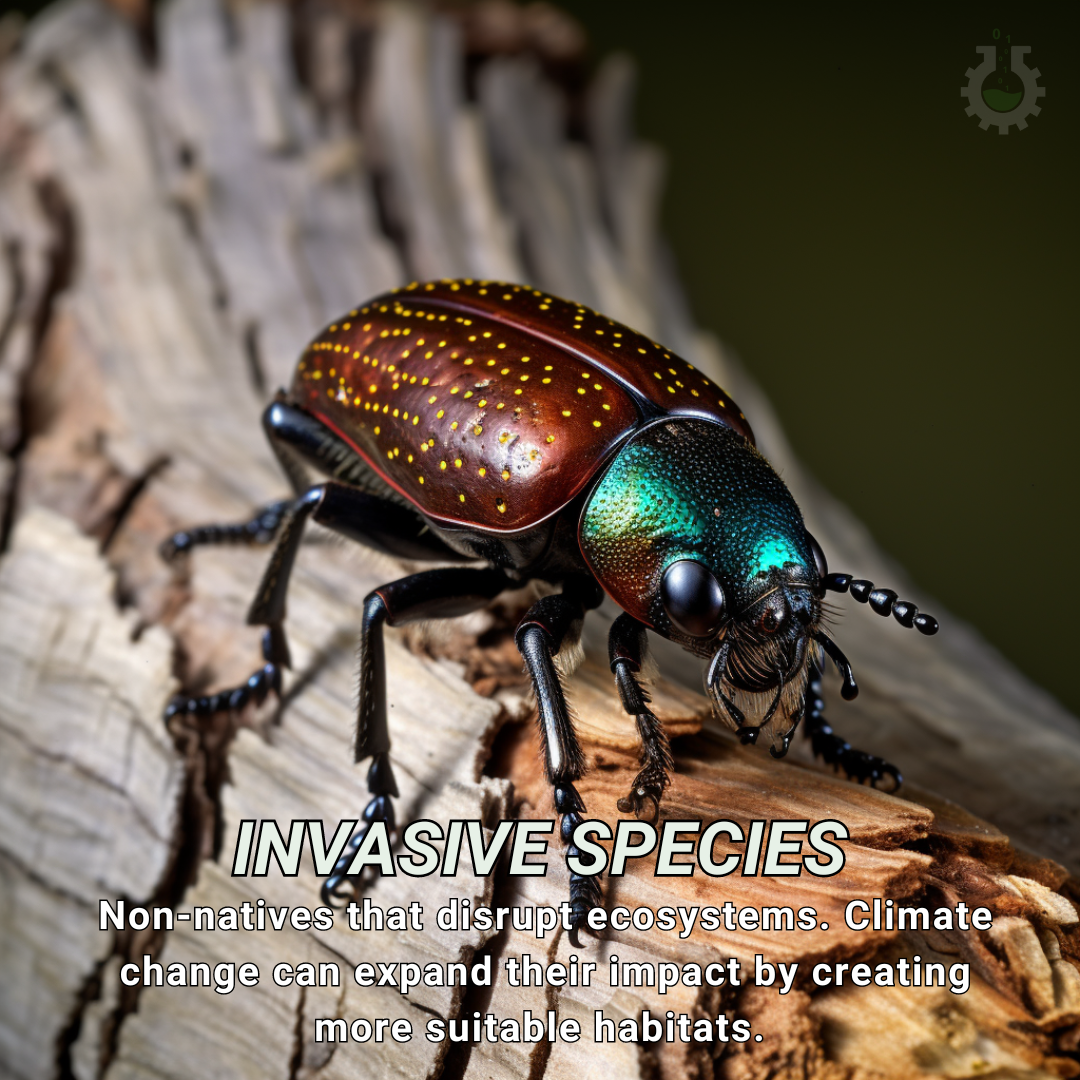October 30, 2023
Climate Change Poster Collection of the Day – Invasive species
Book a Demo
Today’s Climate Change Poster Collection focuses on Invasive species, encompassing plants, animals, and microorganisms, are typically introduced to new ecosystems through human activities, either intentionally or accidentally. Their ability to outcompete native species, disrupt natural habitats, and inflict economic and ecological damage is well-documented. The consequences of invasive species are significant, extending to outcompeting native species, altering ecosystems, and incurring substantial economic costs for control and management.
Climate change, the defining challenge of our time, is transforming the planet in myriad ways. One of the lesser-known yet significant consequences of this global issue is its role in the proliferation of invasive species. Invasive species, often non-native to the ecosystems they inhabit, have the potential to disrupt and harm the environment. With the shifting climate, these invasive species are finding increasingly favorable conditions to thrive. In this blog post, we delve into the intricate relationship between climate change and invasive species, and how this synergy is impacting our environment.
Climate change plays a substantial role in exacerbating the invasive species issue. Rising global temperatures are extending the range of invasive species, enabling them to thrive in regions previously inhospitable. Altered precipitation patterns due to climate change can disrupt water availability, further favoring the invasive species. Extreme weather events, exacerbated by climate change, can facilitate the dispersal of these species. Additionally, climate change weakens native species, making them more susceptible to competition from invasive counterparts.
Two case studies exemplify this complex relationship. In Florida’s Everglades, Burmese pythons, originally from Southeast Asia, have flourished due to warmer temperatures, posing a severe threat to native wildlife. In western North America, the mountain pine beetle‘s expanded range, attributed to milder winters, has led to significant pine forest mortality.
The intricate interplay between climate change and invasive species has profound implications for ecosystems, economies, and societies. Addressing this issue requires vigilant monitoring, early detection, research, collaboration, and efforts to combat climate change. By comprehending the dynamics between these two challenges, we can strive for a more sustainable and resilient future for our planet.
Discover an inspiring collection of climate change poster.



